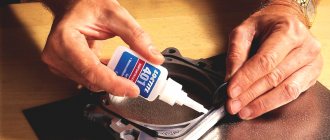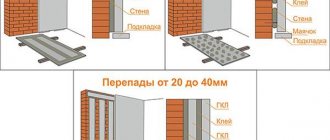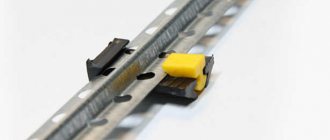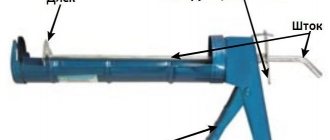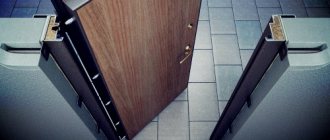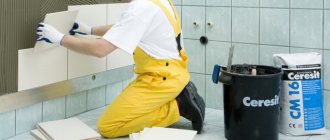There are several ways to connect various objects and materials, but the simplest and most effective method is adhesive fixation. To use a glue gun, you need to know the general operating rules. The principle of operation is simple - the device heats up a polymer rod, which becomes plastic under the influence of temperature. Using a gun, the adhesive mass is applied to the desired area. Then the gluing itself is done.
How to use
Thermal guns are used at large furniture manufacturing enterprises, where they are used to install finishing elements on cabinets, upholstery of sofas, and armchairs. They are used in construction and the production of decorative items. When purchasing for home use, the list of operations increases. Hobbies, children's crafts, interior decoration, minor repairs are the area of application for a glue gun. You need to know the rules for using the device at home. Additional information will make the gun more effective where it can be used, and put it aside where it is inappropriate.
How to charge
Manufacturers have tried to make the operation of the device simple. The design of the pistol allows it to be loaded without additional devices, disassembly, or other operations. The simplest charge is the first one. The rod inlet and nozzle are clean. There are no traces of past work, signs of physical impact, or damage. For work, take the glue of the required brand. When purchasing, you need to know the characteristics of the rod. Products include the following types:
- Transparent. Universal rods with low melting point.
- Black. Designed for sealing joints, like sealant. They have a high melting point.
- Colored. The polymer is painted over the entire mass and the glue on the parts is not visible. Widely used in handicrafts.
- Decorative. They are used when the glue itself becomes a finishing element. May contain glitter, mother-of-pearl, and fibers.
- High temperature. Special types of glue for fixing elements that are subject to increased loads.
When purchasing, pay attention to the diameter of the rod. The most popular brands have values of 7 and 11 mm. However, products of other standards are also available for sale, for example, 8, 12 mm. The rod size specified in the instructions cannot be replaced.
As a rule, charging the glue gun itself is not difficult. The rod is inserted into the hole in the back of the device until it stops. In some models, it is necessary to advance it by repeatedly pressing the trigger until it rests on the heating chamber. Guns with a temperature indicator are convenient. A glowing diode indicates that the device continues to heat up. When the indicator goes out, you can start working.
Warm-up rules
The melting point is indicated on the packaging with the rods. If you purchased a low-power gun, then not every type of glue will work. There are models designed to work with low-temperature rods that melt at 105 °C. It is not recommended to insert consumables with a higher melting point into them. Even if the glue begins to soften, the work will be very difficult and long. Excessive pressure on the mechanical parts of the gun may cause them to break.
Functional and design features
The use of hot glue guns is becoming increasingly popular, since the resulting compounds reliably fix the elements to be glued and dry very quickly. Using rods, you can connect homogeneous and inhomogeneous materials; the fixation strength is similar to metal fasteners. Functional features of thermal guns:
- High polymerization speed of liquid gun glue.
- Reliable connection of products, filling voids and cracks.
- No traces of adhesive after separation.
- When heated, the composition does not release/evaporate toxic substances.
- Consumables are inexpensive, rods are used sparingly.
The craft gun is suitable for children's creativity, but it is advisable to carry out the work under the supervision of parents. Hot glue may cause burns if it comes in contact with the skin.
The design of pistols may differ depending on the model and manufacturer, but the device is based on the following parts:
- Housing made of high quality plastic. It prevents the device from overheating and makes the tool lighter, which is very important for work. The best option is a pistol weighing 300 g.
- Heating chamber with one or more heating elements. The thickness of the rods that are suitable for a particular tool depends on the size of the heating unit.
- Guide sleeve made of heat-resistant rubber. One side of the coupling is connected to the heating chamber, and in the second part the glue rod is fixed.
- The feed unit is a trigger with a rod pusher. Triggers come in slider and rotary types. The wear resistance of the feed unit depends on the smooth operation of the pusher.
- The nozzle of an electric gun made of a metal alloy with a heat-insulating layer (called a nozzle, nozzle) serves for dosed supply of glue and is equipped with a shut-off valve.
The device handle can be equipped with anti-slip pads. Some models are equipped with a drip protection function - a special ball prevents the glue from leaking out when work is interrupted. When choosing a tool, you need to check whether the trigger is pressed smoothly, since the feed unit is the most vulnerable. Each thermal gun uses rods of a certain diameter, the size depends on the dimensions of the coupling.
Safety instructions for use
The device operates on mains power, and electric current always poses a health hazard. A gun is, first and foremost, a heating device. Temperatures can reach up to 200 °C. Glue is also an energy-intensive substance. It cannot cool down instantly. In case of contact with skin, burns are inevitable. When performing certain operations where contact with heated polymer is possible, it is necessary to wear gloves, ensuring the safety of your hands.
Lifehack. During a break, between individual operations, the glue gun is left on the stand with the nozzle down, under which you can put a piece of paper, a piece of fabric, which after work can be thrown away with the remaining glue. The working surface of the stand will remain clean. The glue will not get on the floor or table.
During operation, do not reach into the body with metal objects to remove glue or correct the position of the rod. Do not touch the nozzle during operation. The very same safety precautions when working with glue are not regulated, with the exception of the heating period. When cooled, it is completely harmless, therefore it is allowed for the manufacture of interior elements and children's toys.
How to choose a heat gun
Buyers have a wide choice of glue gun models from different manufacturing companies. To choose the right tool, you need to consider how often you will need to use hot glue. If you need a glue gun for one-time work around the house, there is no need to purchase an expensive and powerful product. Craftsmen use professional tools, since they need to glue different surfaces and elements often. When choosing a glue gun, consider:
- Power. For one-time use, a model with a power of 20-100 W is suitable; for permanent use, a gun with a power of 300 W or higher is suitable.
- Automatic adjustment. It simplifies the gluing process; the device independently selects the melting power of the rods.
- Performance. Hot glue is produced at a melt speed of 5-30 g per minute. For large jobs, you need a powerful glue gun.
- Melt temperature. The materials to be worked with are taken into account: cardboard, textiles - 105°, wood, glass, metal - 165-170°.
- Power supply. The gun for applying glue for household use is mains powered; there are professional devices that run on batteries.
If you have to do a large amount of work, you need a gun with a high melt speed (gluing plywood, large PVC products). Since the glue hardens very quickly, you need to have time to apply it to the surface and press the fragments tightly. For spot gluing small elements (glass, beads, beads, rhinestones), a gun of minimal power and productivity is suitable if the work is done one-time. For professionals who often need to glue a variety of fragments together, it is advisable to choose a more expensive semi-automatic device (10-15 minutes without a network) or a battery-powered model - 45-120 minutes of uninterrupted operation.
Note: It is worth paying attention to the presence of additional options that the heat gun can perform. These include the ability to adjust the temperature when working with various materials - heating, melt range, standby mode. An LED indicator indicates that the device is ready for operation. Some models are equipped with a backlight and a viewing window to monitor the charge of glue sticks. Some are equipped with docking stations with additional capacity. It heats up the glue and prevents molten drops from falling onto the work surface.
On video: How to choose a glue gun?
Problems and their solutions
Over time, some parts wear out. Most often this is the plastic from which the trigger, the advance mechanism and the o-rings in the feed coupling are made. Being in close proximity to the heating chamber, over time they lose elasticity, crack, and crumble. You can replace them yourself by cutting new seals from silicone or heat-resistant rubber. Then the glue under the pressure of the rod will again come out through the nozzles, and not through the resulting gaps or cracks into the gun body.
The nozzles need to be cleaned regularly. If the glue cannot be removed in a cold state, then the device is heated and excess polymer is removed using rags, thick paper, or cardboard. The device is inexpensive, so repairing it with replacement parts is unprofitable. The most vulnerable parts of the device are the trigger and the rod feed mechanism. During operation, the hot glue in the gun is quite mobile, so you should not press too hard on the trigger. You can damage it, or create excessive pressure in the heating chamber, which will lead to accelerated wear of the seals.
Operating principle of the heating unit, feed mechanism and coupling of an electric glue gun
Before you understand how to use a glue gun, you need to understand the principle of its operation and structure. The heating chamber is located in the barrel of the device and looks like a metal compartment. A heating element is installed nearby as standard. Some devices have multiple heating chambers to ensure even heating. It is the thermal unit that is considered the main part; it determines how long the gun will last.
The size of the heating chamber and its power determine the result of the device’s operation, how quickly the rod will melt, and in what volumes it will be prepared for application.
The feed mechanism is a ring pusher, its action is started by pressing the trigger. This element requires special attention; most often it is the one that fails if you actively try to squeeze out a larger volume of glue. Most often, the size of the mechanism is suitable for a certain type of rod; if its dimensions differ from the required ones, the device will quickly fail.
If we talk about the silicone type of gun, then it is worth considering the work of the guide coupling. It looks like a receiver in the form of a tube and is installed in front of the heating chamber. Serves as an obstacle to prevent liquid glue from getting back into the device. This element fails faster; the coupling is made of rubber, which loses its properties over time and allows molten glue to pass through. Therefore, it is difficult to supply glue at the outlet; such problems can lead to a short circuit.
The feed mechanism is a ring pusher, its action is started by pressing the trigger.
How to change the color of the rod correctly
Often during operation it becomes necessary to replace the rod. For example, to change the color of glue for decorative finishing. To do this, turn on the device. After heating, carefully remove the rod. Insert the desired one. After the time recommended to achieve the required temperature has been maintained, the remnants of the old rod are squeezed out of the nozzle until new glue appears. It is advisable to refill with a rod of a similar brand. Then the operating mode will remain the same, and there will be no noticeable difference in texture on the finished product. You can change not only the color of the glue. You can install a rod with filler to create an original design.
Types of hot-melt adhesive rods
Different types of rods can be sold, they can be used for a variety of purposes; for ease of differentiation, a color designation is used.
By purpose
It is worth noting that not all manufacturers strictly adhere to divisions of product colors by area of use. However, colors usually mean:
- White, almost transparent – universal;
- Colored ones without transparency are also universal, the color is used for fixing with a material of a similar color;
- Opaque white - some can only be used with glass, others have a white color to be combined with a white product of any material, here you need to look at the composition and manufacturer;
- Transparent yellow, universal, but usually suitable for securing products made of cardboard, paper and wood;
- Gray and black colors indicate that these are sealants intended for insulating electrical wires and sealing seams.
Not every manufacturer has the same purpose as the list above, so you need to read the instructions before purchasing.
It is worth noting that not all manufacturers strictly adhere to divisions of product colors by area of use.
Material
The standard rod form is used for hot melt adhesive guns of various types, including simple household versions; they are based on ethylene vinyl acetate. Polyamide or modified silicone is also used.
Modified silicone is especially effective when working with fabrics.
The standard rod form is used for hot melt glue guns of various types, including simple household versions.
Size and weight
The diameter of these types of adhesives varies from 7 to 12 millimeters. More often they choose 7 and 11 mm rods. Length - from 100 to 300 mm. A package containing 6-10 products weighs 15-150 grams.
The diameter of these types of adhesives varies from 7 to 12 millimeters.
Direct operation of the glue gun
In fact, the rod does not contain adhesives. Adhesive qualities appear only when heated. It is a waterproof polymer that, in its liquid state, can adhere to almost any surface. This is achieved with the help of a pistol. The inserted rod is brought to the melting temperature in the heating chamber and extruded through the nozzle onto the part. The mode depends on the power of the device and the brand of glue.
Preparation time for low temperature rods is about 2 minutes. Then the glue is applied to the surface. The second part is pressed and held in this position until it sets. The time may increase if a significant amount of glue is used. If it is a small drop, then a few seconds are enough. If several grams are applied, then the structure needs to be kept for up to 2 minutes. Complete cooling and set of operational characteristics occurs in approximately 5 minutes.

